Introduction to smart hospital model Development Support Project Modules

Introduction to smart hospital model Development Support Project Modules
39 individual models have been reconstructed into 9 modules.
As single technical elements become more interconnected, the synergy of smart hospital model adoption improves.
The following modules are examples we've arranged at our Center; they can be combined in various ways depending on individual hospital status and adoption purposes.
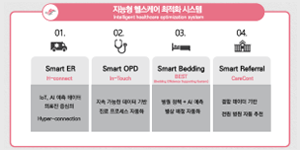
Patient Flow Optimization
- Automate outpatient and emergency room care to reduce simple repetitive tasks for medical staff and minimize patient waiting times.
- It creates a full-time intelligent work environment using AI, from hospital bed assignment when hospitalized to automatic hospital recommendation when discharged.
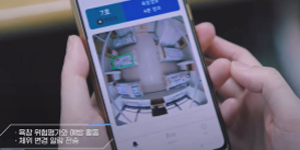
Enhanced Patient Safety
- It prevents safety accidents in hospitals such as falls and bedsores by utilizing IT technologies such as 360-degree cameras and image AI.
- It has a system that monitors the patient's condition in special wards such as cancer wards and mental wards in real time, and detects and responds to abnormal situations early.
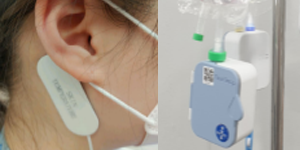
Automation of Nursing Tasks
- wirelessly collect, transmit, and record data from inpatients and enhance healthcare-patient communication using individual patient bed monitors.
- It reduces the simple and repetitive work of medical staff by applying location tracking of mobile assets (wheelchairs, etc.) and automatic refrigerator temperature monitoring sensors.
- Improve the quality of medical services by creating an environment where medical staff can focus on patient care.
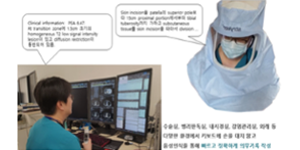
Smart Operating Rooms(e-OR)
- Monitor the location and status information of expensive medical devices in the operating room using real-time positioning (RTLS) technology.
- It shortens the time required for medical records and minimizes the risk of infection by applying Voice EMR technology that allows you to enter surgical records by voice without attaching and detaching protective equipment.
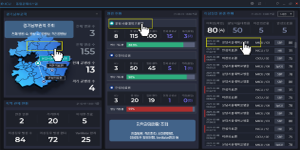
Remote Intensive Care Units(e-ICU)
- Connect physically isolated intensive care units (between in-hospital or base-cooperative hospitals) to monitor patient health in real time and conduct non-face-to-face consultations if necessary.
- It can provide higher-quality intensive care services to areas with insufficient medical resources and increase the efficiency of bed operation.
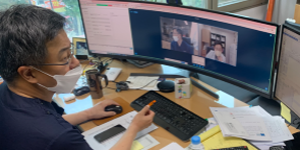
Support for Infectious Disease Crisis Response
- In the event of an infectious disease crisis such as COVID-19, it automates the process of classifying severity and allocating quarantine beds to confirmed patients in the region.
- Remotely monitor the vital signs of self-quarantined people and residents of the living treatment center and conduct non-face-to-face consultations between medical staff to predict and cope with worsening severity early.

Unified Infection Control
- It automates infection control tasks periodically, from "access control" to "movement analysis" to "congestion management" to "environmental disinfection" for all visitors in the hospital.
- Enhance patient safety by reducing simple and repetitive human tasks and increasing the efficiency of infection control.
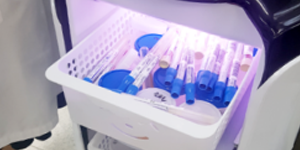
Intelligent Intra-Hospital Logistics System
- It builds an unmanned delivery system between pharmacies, supply rooms, and wards using self-driving robots and a more secure biometric authentication system.
- Increase operational efficiency by reducing the time and manpower required to deliver goods.
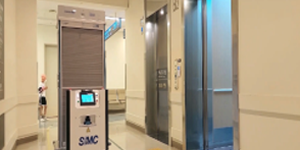
Intelligent Automation of Workflow
- It builds a four-free (no claim, no inventory, no inspection, no unmanned) intelligent logistics system through standard quantity prediction, automatic inventory management, and robot delivery.
- Increase the efficiency of the logistics management system and minimize repetitive administrative tasks to create an environment where you can focus more on patient care.
You can scroll left and right.
Patient Journey
Back Office (Clinical Support)
- Smart Cart Room Inventory Management System
- Smart Quantity Standard Prediction System
- AI-Based Logistics and Transportation System (AGV)
- Smart Bed Allocation Program
- Smart Transfer(Recommended by hospital) Program
-
Entry and Exit
- AI-Based Regional Infectious Disease Patient Management System
- Smart Entry and Exit Control System (Kiosk and Speed Gates)
- Real-Time Location Tracking Infection Monitoring System (RTLS)
- Epidemiological Management RIB System
- Autonomous Infection Control Robots
- Intra-Hospital Congestion Management System
-
Outpatient Services
- AI-Based Logistics Transportation System (Delivery Robots)
- Biometric Authentication Authorization/HIS Biometric Authentication System
- Smart Asset Management System (Outpatient Services)
- Smart Outpatient Service (OPD)
- Smart Oncology Day Ward Monitoring System
- Remote Collaboration System for Infectious Diseases
-
Emergency Services
-
Surgery
-
Intensive Care Units
-
Hospital Wards
- Automation of Inpatient Nursing Task
- Automated Refrigerator Temperature Monitoring
- Individual Patient Bedside Monitoring
- Remote Vital Sign Monitoring
- Isolation Ward Automatic Assignment System
- Smart Asset Management System (Wards)
- AI-based High Risk Group Categorization and Early Detection System for Fall and Bedsores
- Smart Fall Prevention Integrated Management System (RTLS-Based)
- Smart Bedsore Prevention Integrated Intervention System
- Smart Beds (Bedside Stations, Room Signage)
- Personalized Inpatient Information Delivery (Mobile App Enhancement)
- Immersive VR for Patient Education
- Patient-Doctor Communication System
- AI Speaker Emergency Call
- Personalized Inpatient Information Request and Delivery System
- Patient-centered Maternal Care, Caregiver Counseling and Education System
- Inpatient Maternal Monitoring, Scheduling, Online Consultation System
-
Special Wards
-
Discharge/Local Community
- Remote Vital Sign Monitoring Management System (Community Care Centers)
- Home Care System
- Personalized Home Monitoring System for Mothers
- Post-Discharge Maternal-Newborn Care Management System
- Regional Collaboration Support System (Surgical Patients)
- Collaboration with Regional Hospital through Exchange of Medical Information Among Medical Facilities
- Enhanced Patient Referral and Transfer Collaborative System Between Tertiary Hospitals and Other Hospitals
- Tele-Collaboration and Referral System Between Clinics and Hospitals














